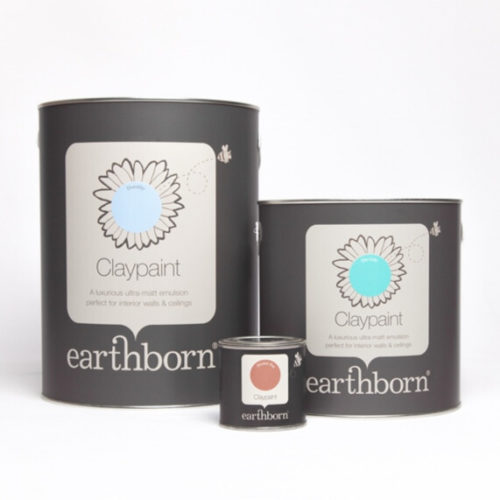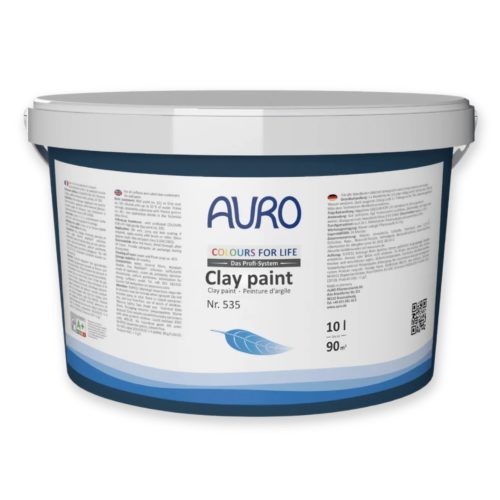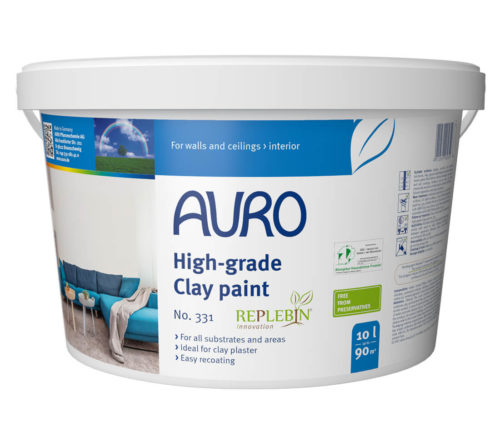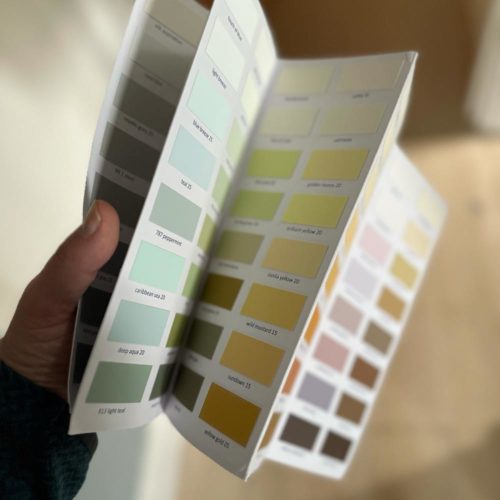Yes, clay paint can be used on lime plaster. It's a highly breathable paint type, making it an effective alternative to lime based paints or limewash.
In this guide, we'll explain why clay paint is an effective paint for lime plaster, what kind of finish you can expect, and how to apply it properly for long lasting results.
What Makes a Paint Suitable for Lime Plaster?
Lime plaster is a traditional, breathable material often found in period homes and sustainable renovations. Unlike modern gypsum plaster, it is highly breathable and needs to be finished with paints that allow moisture to escape.
Older properties with solid walls need breathable plasters and paints to help moisture naturally escape from the building. Using the wrong type of paint can trap moisture and cause flaking, damp, issues with mould infestation, or even structural damage.
Here's why clay paint is highly suitable for lime plaster:-
- Breathability – lime plaster needs a paint that allows moisture to pass through the substrate. Clay paint is a highly breathable paint type, unlike conventional plastic based paints.
- Highly compatible – clay paint is designed to work on lime based plasters, meaning it's great to use on old or newly applied plasterwork.
- Natural Ingredients – clay paint has no plastic binders unlike acrylic and vinyl emulsion. It's low or zero voc, and a sustainable and eco friendly paint formulation. This paint type is an excellent choice for allergy sensitive households.
Common use cases include listed buildings, solid wall properties, and new eco builds using natural materials.
Why Clay Paint is a Good Breathable Option for Lime Plaster
Lime plaster needs vapour permeable (or breathable) paints. This means that the paint allows moisture to easily pass through the surface without becoming trapped
Clay paint is highly breathable, with some brands achieving very low Sd values. For example, Earthborn Claypaint has a water vapour permeability of 0.02m. A low number like this means water vapour can easily escape through the clay paint layer, allowing the lime plaster underneath to perform as intended.
Clay paint is also:
- Made from natural clays and minerals.
- VOC-free and low odour.
- Ideal for those sensitive to chemicals.
- Suited to dry, interior spaces like living rooms, bedrooms, and hallways.
It's a great choice if you want a natural finish with a unique texture. The soft, almost velvety matt finish enhances light, and creates a tranquil ambience in your home. It also contributes to good indoor air quality, making your home healthier for the whole family.
Other Paints That'll Work Well on Lime Plaster
If you're still considering your options for painting lime plaster, here's a quick guide to other breathable paint types that work on this substrate.
- Lime Paint – Traditional and fully compatible. Forms a chemical bond with lime plaster and maintains full breathability.
- Silicate Paint – Tough and durable mineral finish. Silicate paint forms a strong bond with lime plaster, creating highly effective breathability
- Casein Paint – This is a milk protein based natural paint with good breathability. It works well with lime plaster due to its breathability, flexibility, and bonding functionality. It's resistant to cracking and peeling.
What Finish Can You Expect with Clay Paint on Lime Plaster?
Clay paint produces a beautifully soft, chalky matt finish. On lime plaster, the result is often subtly textured and rich in character. Colours tend to appear muted and velvety, which suits both historic interiors and calm, modern schemes.
Because lime plaster absorbs paint differently to gypsum or modern plasters, expect a natural variation in tone and finish, a desirable feature in many historic restoration projects.
Things to Know Before Painting Lime Plaster with Clay Paint
- New plaster should be fully cured (at least 4–6 weeks depending on thickness and humidity).
- Old lime plaster may have uneven, crumbly, or chalky patches that should be gently brushed back or filled using a breathable filler.
- Do not use PVA or sealing primers, these will compromise breathability.
Clay paint may dry slightly faster on lime than on modern surfaces due to higher porosity.
How to Apply Clay Paint to Lime Plaster
- Prepare the surface: Brush off any loose material. Fill small cracks with a natural lime compatible filler.
- Mist coat: Thin the first coat of clay paint with around 20% water. This allows it to soak into the plaster and form a breathable base.
- Apply top coats: Once the mist coat is dry, apply one or two full-strength coats using a brush or roller.
- Avoid overworking: Clay paint is delicate when wet, so use gentle strokes and avoid back-brushing.
Clay paint can look patchy during the drying process, don't worry if this happens. The colour will even out as the paint dries.
FAQs
What happens if you paint lime plaster too soon?
The paint may not adhere properly, and moisture can become trapped, leading to flaking or damp.
Can I use PVA on lime plaster?
No. PVA is non-breathable and will seal the surface, which can damage the wall.
What is clay paint used for?
Clay paint is ideal for internal walls and ceilings where breathability, low toxicity, and a soft, natural finish are desired.
Is clay paint suitable for damp-prone rooms?
Clay paint is breathable, but it isn't washable or mould-resistant. It can be used in well ventilated kitchens or bathrooms, but for high-moisture areas, consider mineral based paints with higher durability.
Clay paint is a fantastic match for lime plaster. It's breathable, natural, and provides a distinctive matt finish that suits both old and new homes. As long as you apply it correctly, it will perform well without compromising the integrity of your lime plaster walls.
See More: Is plaster breathable? | What is clay based paint? | How to apply limewash paint






